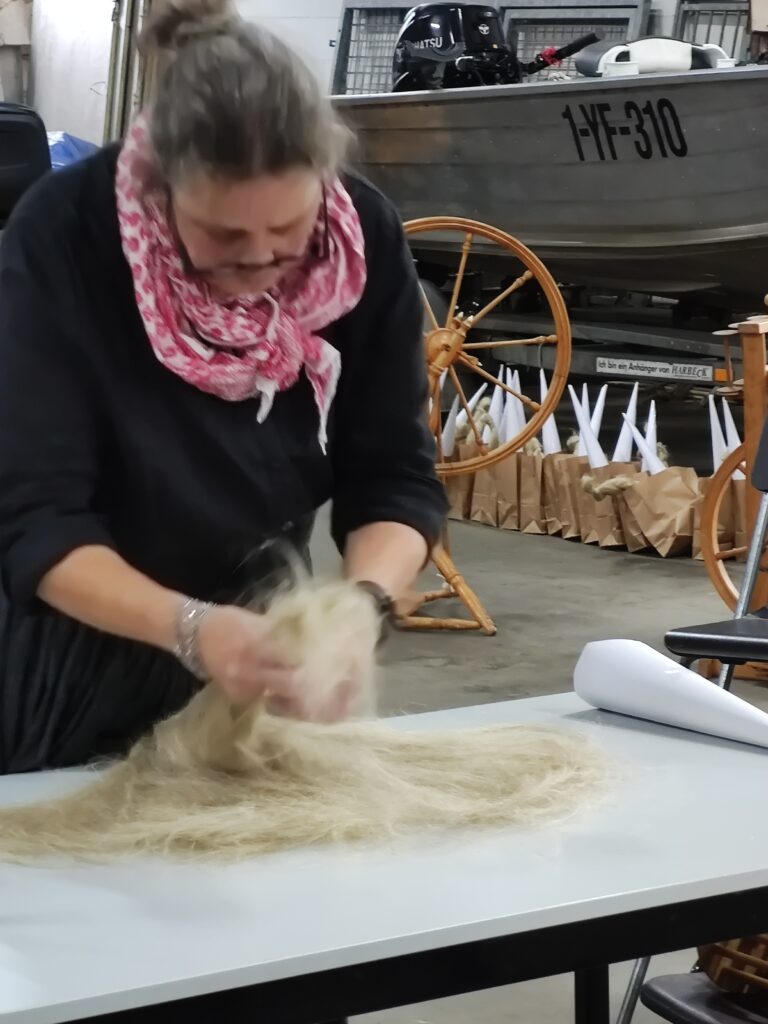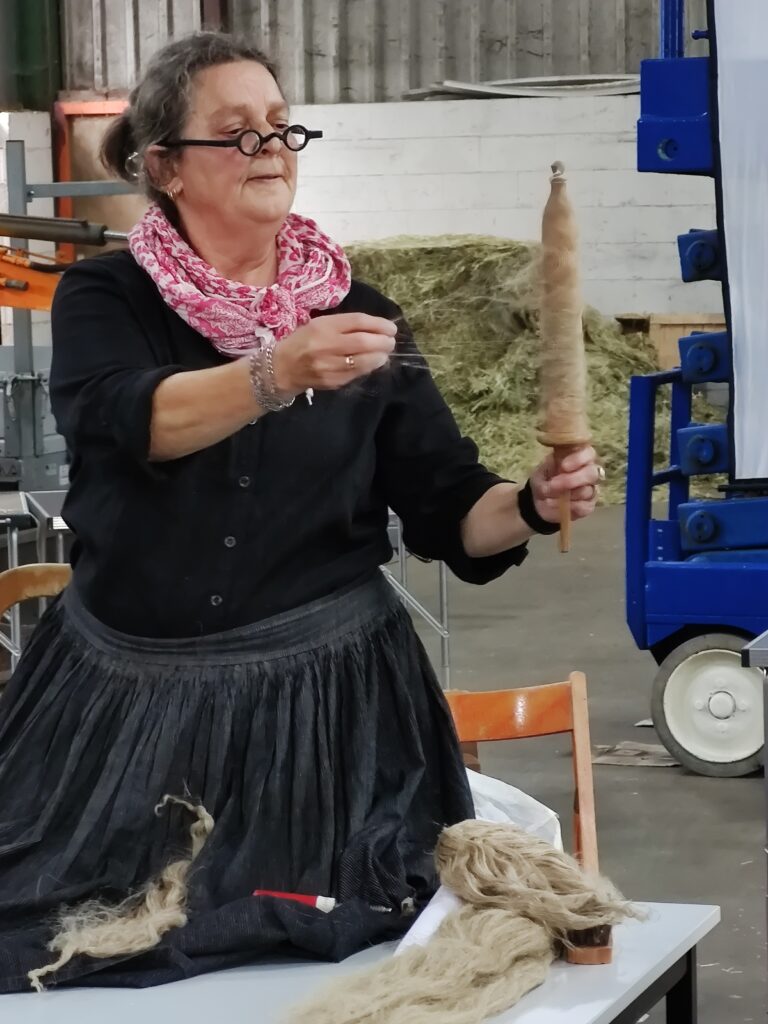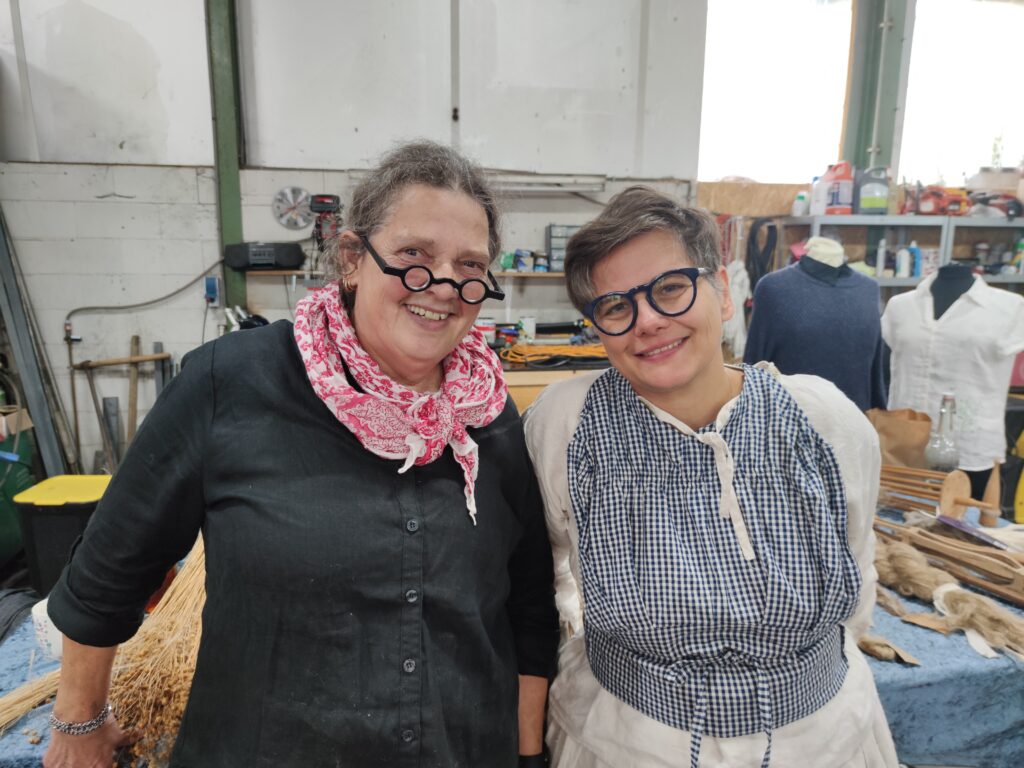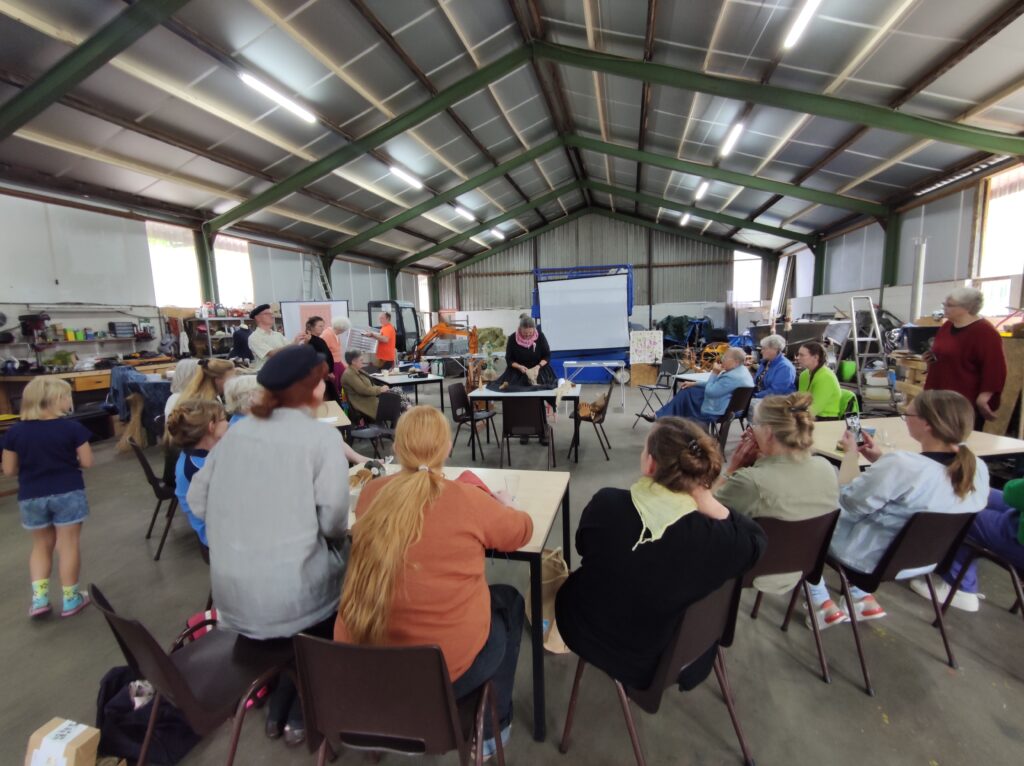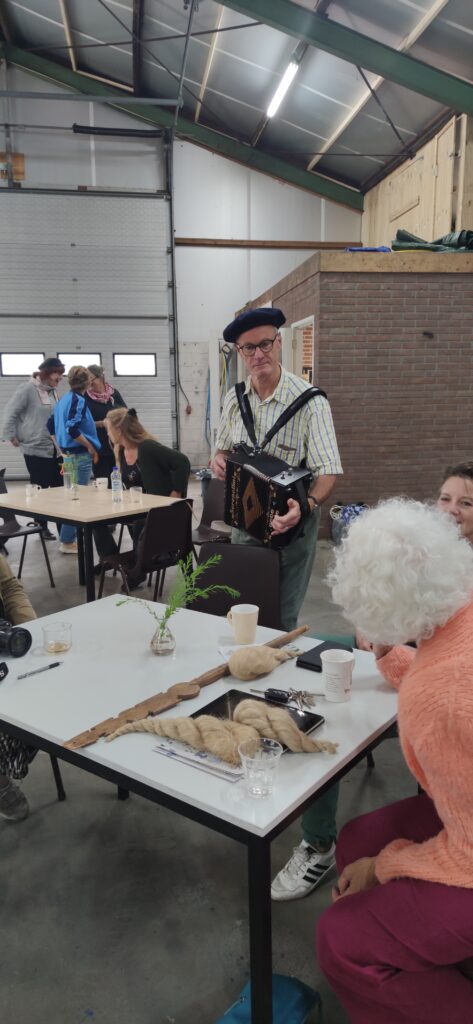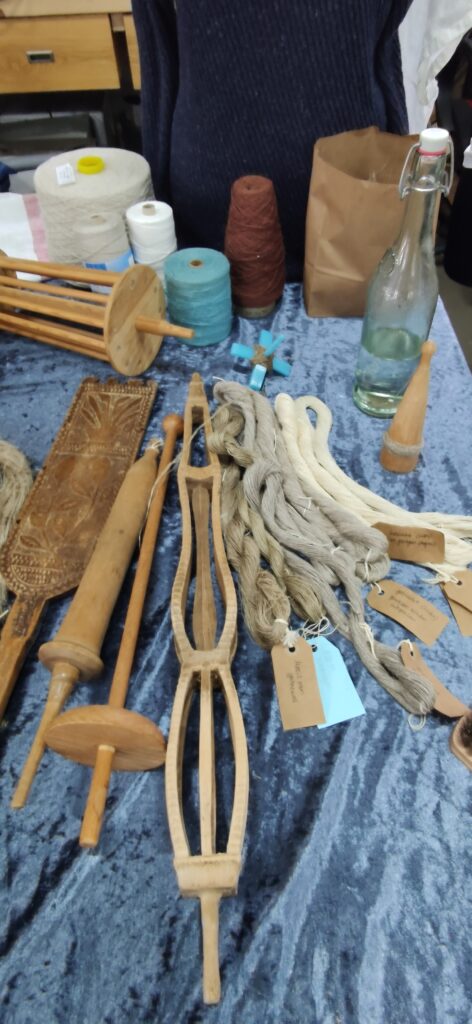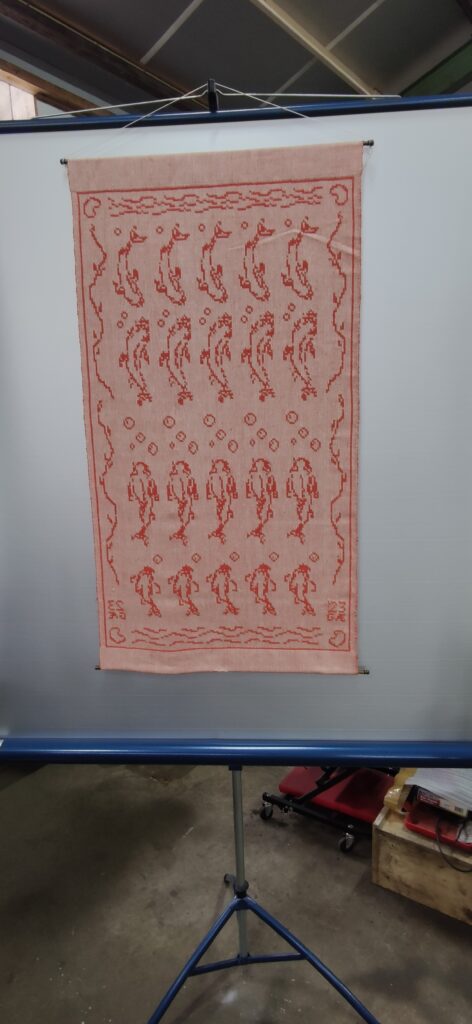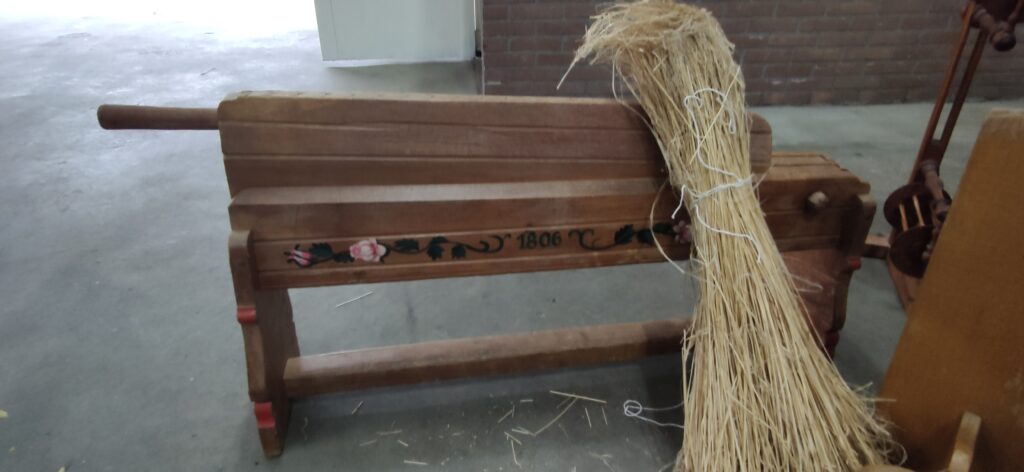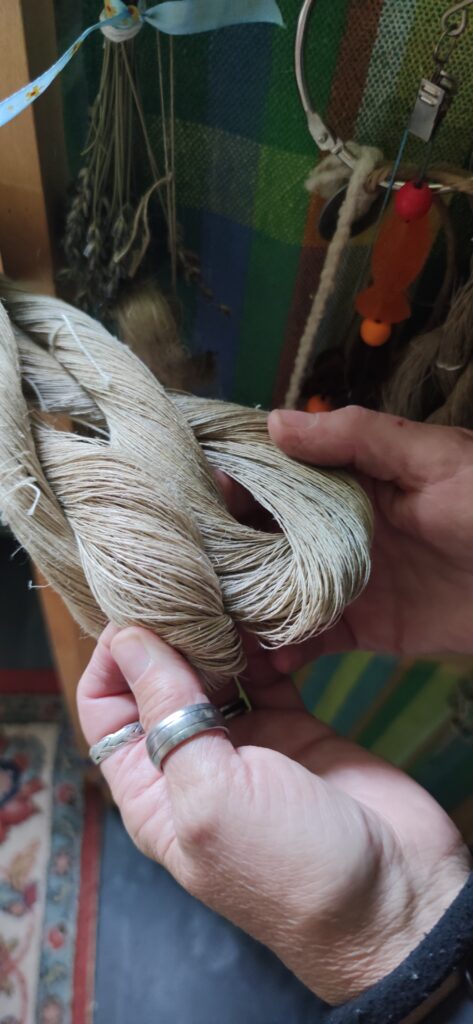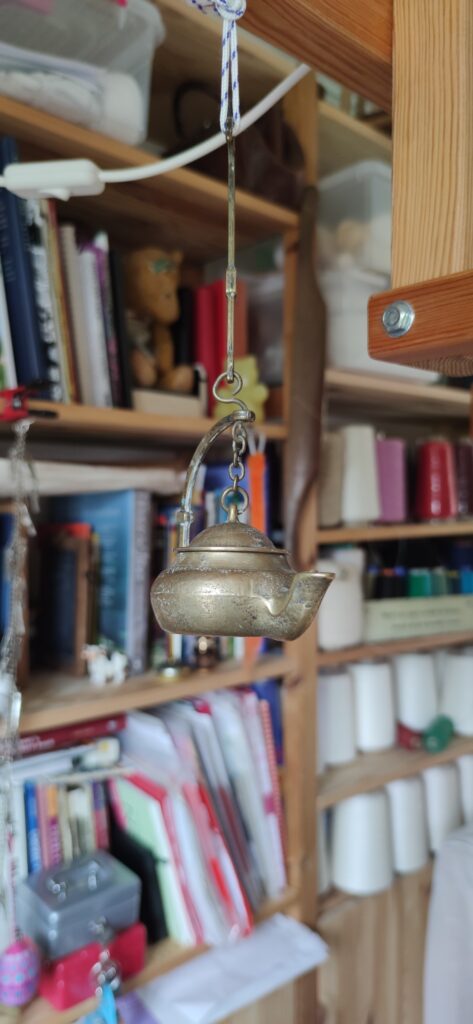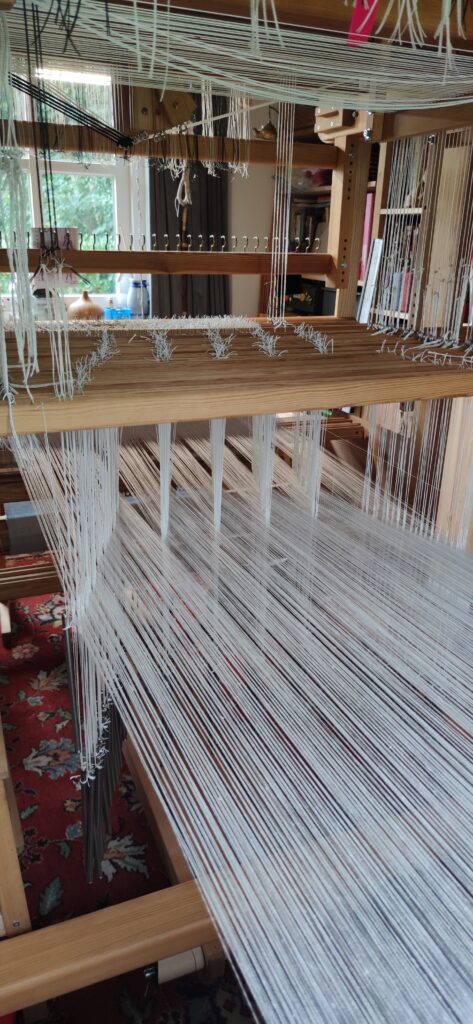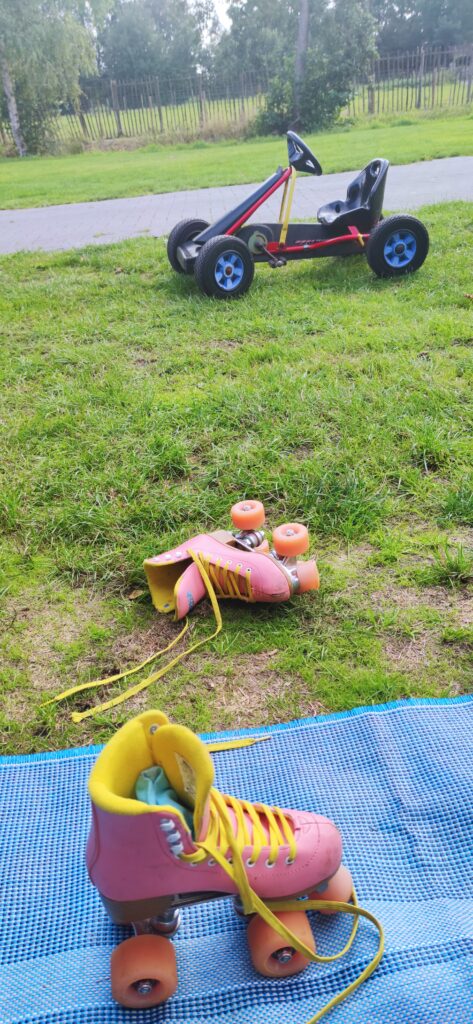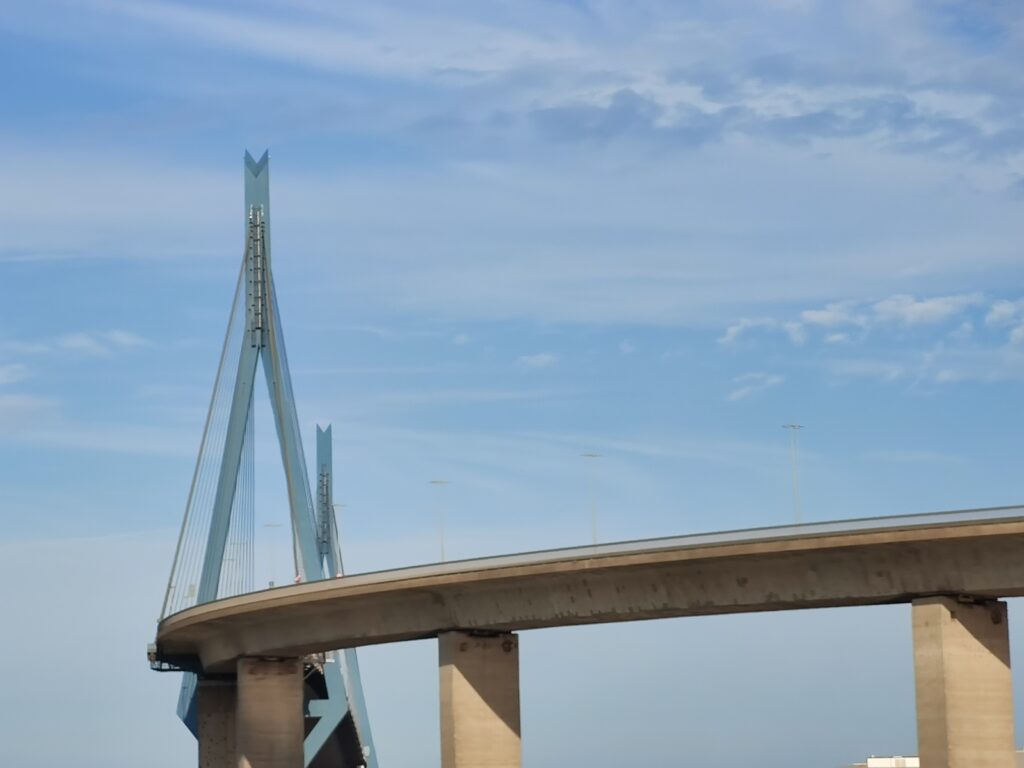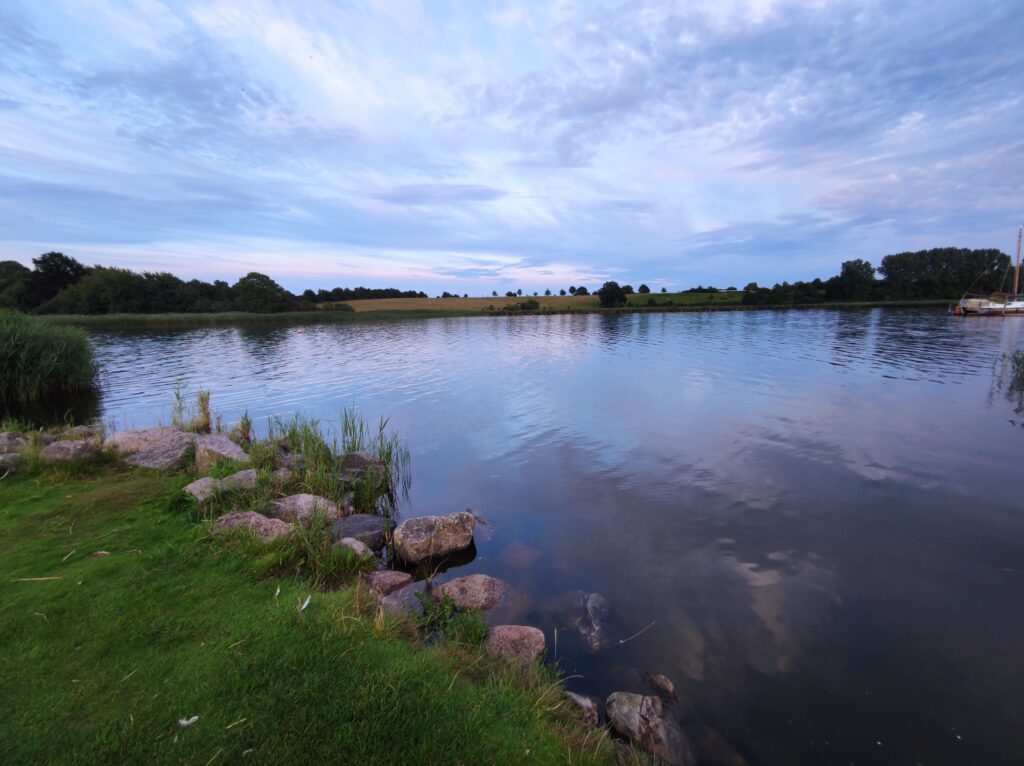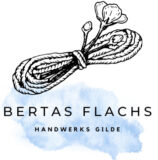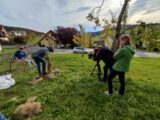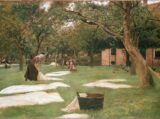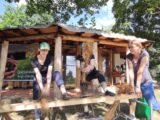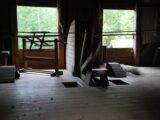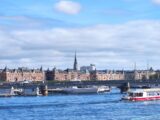The Netherlands also greeted us with rain, albeit more discreetly than the days before. The route took us 200 kilometres north from Burlo towards Friesland. For the first time, I realised (although I'm not very geographically aware) just how far we were travelling here.
The campsite in Oudehorne (Friesland) is a real paradise for children. Peacocks greeted us with loud cries, horses and sheep in the neighbouring paddocks vied for our attention and we would probably have to pay an entrance fee for the playground. Child happy - mum and dad relaxed - a day's break before Berta and I's next "gig" with flax spinner Geeskegrietje van Dijk.
Flax rises in Friesland
The province of Friesland is the only one in which another language besides Dutch is an official language, the closely related Frisian. Friesland was an important flax-growing region from the 18th century onwards. Before that, flax was always grown on a small scale. Since the Middle Ages, linen has mainly come from Flanders and northern Germany. After 1800, cultivation increased dramatically. In 1835, flax was grown on 20% of the Frisian farmland. However, the boom only lasted 100 years. With cheaper cotton coming from the sea, the demand for linen fell and after the Second World War, flax cultivation in Friesland came to an end. The remaining production moved to Zeeland, where flax is still grown today.
The remnants of its former greatness can still be seen on the coast in the north of the province. In the Vlasmuseum It Braakhok and on a whole flax route, the tradition is preserved anew every year with spinning demonstrations, blue printers and blue fields. Unfortunately, the weather put a spanner in the works and instead of a trip into the blue, we spent a rainy day at the campsite - which was also fine. Gea also invited me round and showed me her collection of looms, including one from the 17th century. She is a wonderful damask weaver and learnt to spin flax from her grandmother. She loves linen and flax. One of her greatest wishes in this context is to have Frisian linen again. A lot is happening in this context. A group of enthusiasts are growing flax again on an area of just over 20 hectares, which was once processed separately by a production company in Zeeland. Unfortunately, the quantities that can be produced each year are (still) too small to be able to have this processing done regularly.
Coarse flax and fine damask
Gea gets its flax from Zeeland, where 91% of all Dutch flax comes from. I hope we can stop by there on the way home.
The workshop day began with a technical hiccup. The projector, which is on tour with us, is a diva and cost me some nerves, but in the end it held up well. 21 linen and flax enthusiasts listened to the stories of Berta's flax and we compared traditions and materials. Fine damask from the 18th century, far removed from the coarse peasant linen of the Mühlviertel and yet one and the same fibre. Berta also made new friends here and they started Gea's flax course with full vigour. I would have loved to stay with them, but there were almost 500 kilometres of motorway ahead of us. Back to Germany to the Schlei, Germany's only fjord, as a stopover before our next border hop to Denmark.
Tomorrow we're off to Haitabu, Europe's largest harbour in the early Middle Ages.
